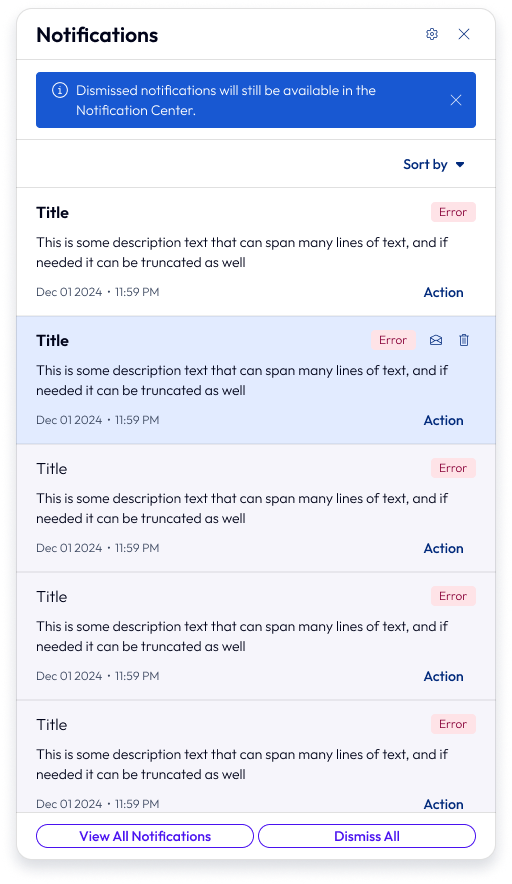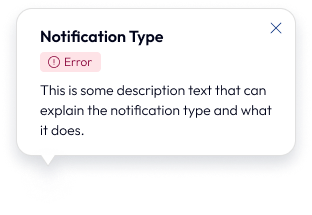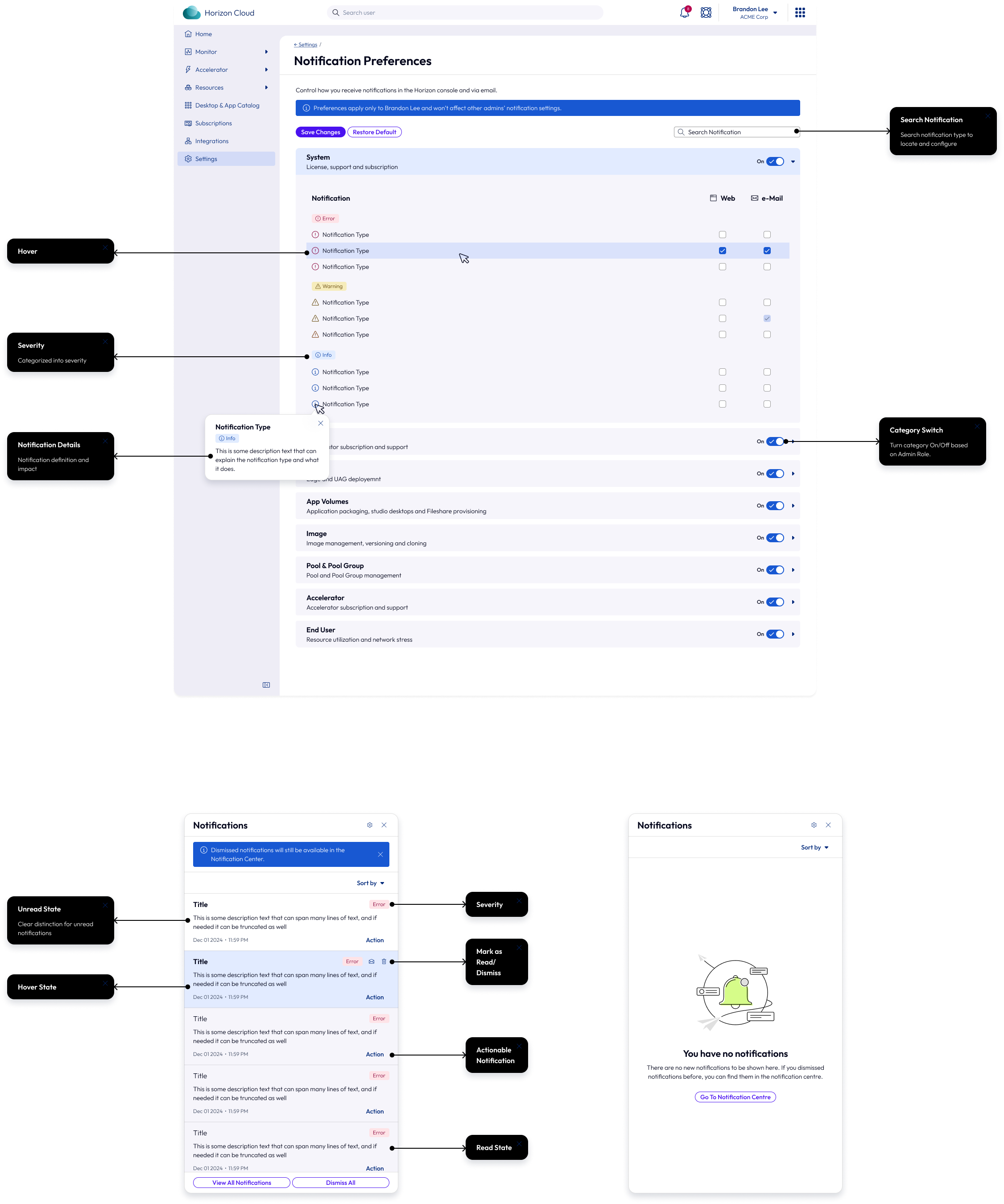Redesigning
Notification System
As the Design Lead for Core Services, which includes the notification system, I initiated and led a comprehensive redesign of the notification experience for Horizon Cloud Console. This effort included:
-
Designing a structured, scalable notification delivery system
-
Defining user-controlled notification preferences
-
Creating a design guidebook for consistent implementation across teams
-
Conducting cross-functional presentations to align product and engineering stakeholders
🔒 This project is under NDA. Details cannot be shared publicly. Please get in touch to learn more about the process and designs.
Timeline
2024
Role
Design Lead



Why was a redesign needed?
Notifications had long been treated as an afterthought across product verticals, often excluded from the core design process. Many were introduced post-design by product or engineering teams without any design oversight. This resulted in a fragmented and unstructured notification system—poorly designed, inconsistent in content, and largely ignored by users.
Over time, the number of notification types exceeded 100. Instead of helping users monitor system health, the notifications became overwhelming and ineffective. Many users began disregarding them entirely. Some customers even requested a way to disable notifications altogether, as they were seen as more disruptive than helpful.
Identifying the Problem
To uncover the root causes of the notification system’s shortcomings and inform the redesign, I led a multi-pronged discovery effort:
-
Customer Interviews: Conducted in-depth interviews with 7 enterprise customers, including representatives from leading automotive manufacturers, federal institutions, and universities. These sessions helped surface pain points around noise, relevance, and actionability of notifications.
-
Notification Audit: Performed a comprehensive audit of the existing notification system, classifying over 100 notification types into meaningful categories. This helped identify redundancies, inconsistencies, and irrelevant alerts.
-
Process Mapping: Mapped out how notifications were being generated, governed, and delivered across the platform. This revealed a lack of ownership and consistency, with multiple teams pushing out messages without a unified strategy.
-
Designer Workshop: Facilitated a workshop with product designers to uncover roadblocks in designing effective notifications. The session helped identify the need for reusable patterns, content standards, and centralised guidance.
-
Support Team Focus Group: Organised a focused discussion with support engineers to understand common user complaints and support tickets related to notifications. This validated the internal perception of user frustration and provided concrete examples of notification failures.
How We Improved Notifications

Simplified Categorization
Reduced notification categories from 28 to 8 in collaboration with UX content, eliminating redundancy and improving clarity.

Guidebook for Designers
Created a content and design guide to standardize tone, structure, and usage across teams.

Design System Integration
Contributed to system components like notification tray, toast styles, and delivery patterns.

User Controls
Designed granular notification preferences, allowing admins to customise alerts based on their roles.

Stakeholder Alignment
Presented findings to Product and Engineering leadership to drive prioritization and adoption.
Design
Based on user research and identified needs, the final notification system focused on clarity, control, and consistency.
